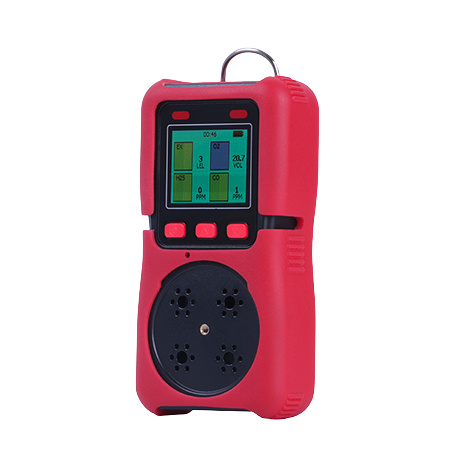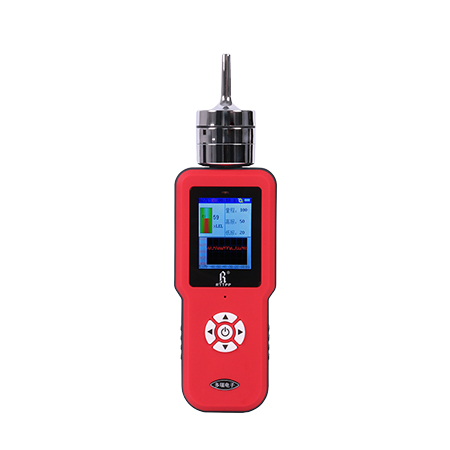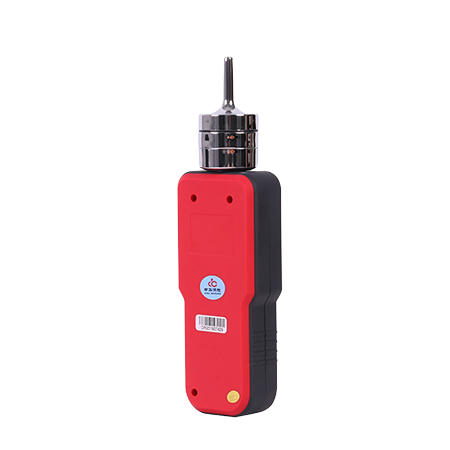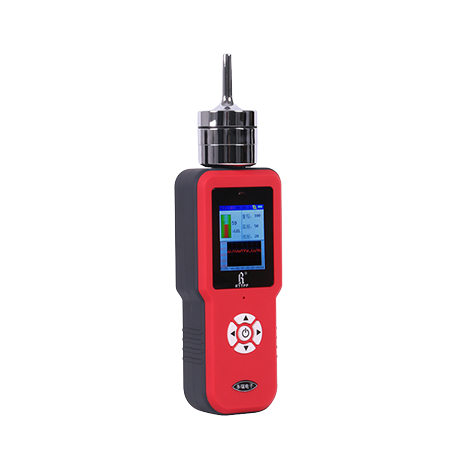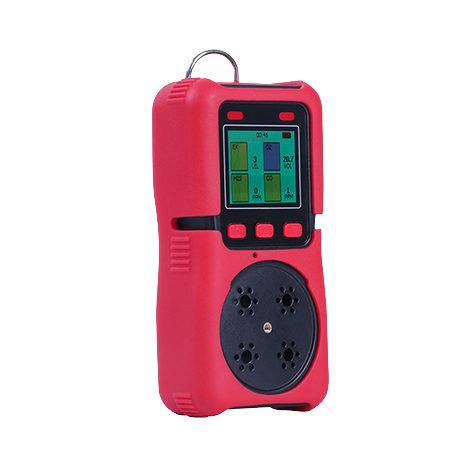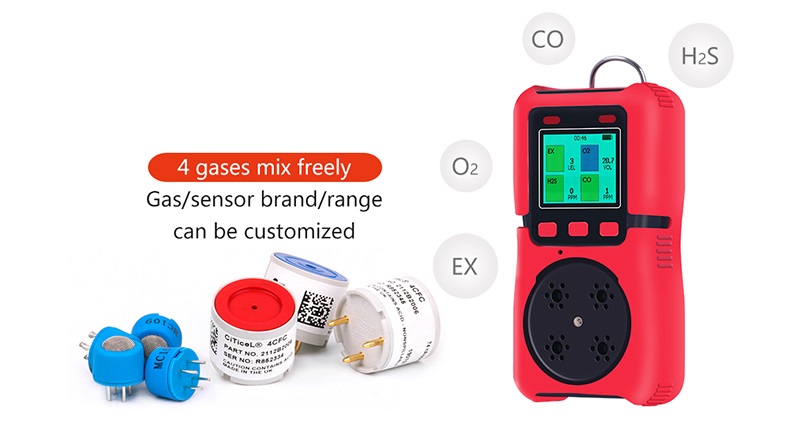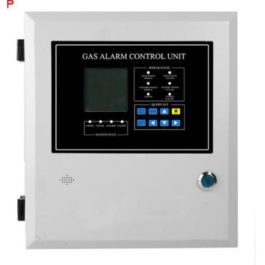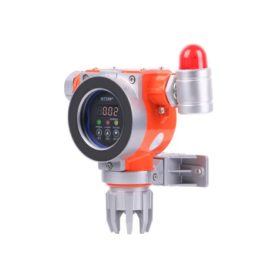Description
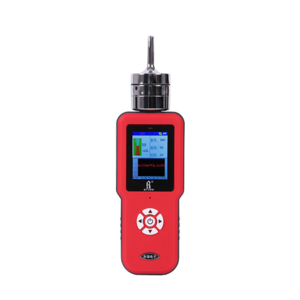 Portable Gas Monitors or handheld LEL (Lower Explosive Limit) gas detection devices is a portable instrument used to measure the concentration of flammable gases in the air. These devices are designed for ease of use, allowing for quick, on-the-spot monitoring of potentially hazardous gas levels in various environments.
Portable Gas Monitors or handheld LEL (Lower Explosive Limit) gas detection devices is a portable instrument used to measure the concentration of flammable gases in the air. These devices are designed for ease of use, allowing for quick, on-the-spot monitoring of potentially hazardous gas levels in various environments.
Typically, a handheld LEL gas detection device features a digital display that shows real-time gas concentration levels. Also, as well as visual and audible alarms to alert the user when the gas levels exceed safe thresholds. In addition, these devices are commonly used in industrial settings, confined spaces, and emergency response scenarios to identify and mitigate the risks associated with combustible gases.
Handheld LEL gas detectors or Portable Gas Monitors may utilize catalytic bead or infrared sensor technologies to detect the presence of flammable gases. Some models offer additional features such as data logging capabilities, adjustable alarm setpoints, and built-in rechargeable batteries for extended use.
These Portable Gas Monitors serve as essential tools for ensuring the safety of personnel, as well as for compliance with safety regulations and standards in various industries.
Handheld LEL gas detection devices are designed to offer convenient and reliable monitoring of flammable gas concentrations.
Features of Portable Gas Monitors
Gas Detection Technology
Portable Gas Monitor / Handheld LEL gas detectors typically utilize either catalytic bead sensors or infrared sensors. Catalytic bead sensors detect the presence of combustible gases by measuring the heat generated through oxidation. All this while infrared sensors identify gases by analyzing the absorption of infrared light.
Display and Alarms
These devices feature digital displays that show gas concentration levels in parts per million (ppm). It is also shown as a percentage of the Lower Explosive Limit. Furthermore, they also include visual indicators and audible alarms to alert the user when gas levels exceed safe thresholds. This alert ensures timely action can be taken.
Portable and Lightweight
Handheld LEL gas detectors are designed to be portable and ergonomic. This allows for easy carrying and use in various work environments. Finally, their lightweight construction and durable housing make them suitable for field use and on-site inspections.
Battery Power
Many handheld Portable Gas Monitors are powered by rechargeable batteries, providing extended operational time on a single charge. This makes them practical for continuous monitoring or for use in locations where power sources may be limited.
Need to Calibrate Your Portable Gas Monitor?
Specifications
| Detection of type |
Combustible gas/ Toxic gas |
| Detection way |
Diffusion |
| Battery |
3.7V, 6000mAh lithium polymer battery |
| Sensor life |
24-36 months |
| Sensor Type |
Catalytic combustion/Electrochemical/semiconductor /
PID/ non-dispersive infrared |
| Working environment |
Atmosphere:86kPa-106kPa
Temp:-10℃~55℃
Humidity:≤90%RH |
| Product Quality |
≤250g |
Replacement Parts
Sensor Screen Filters: These are protective elements that shield the sensors from dust and other particles. They ensure that the sensors can accurately detect gases without interference.
Back and Front Enclosures: These are the outer shells of the monitor. They protect the internal components of the device from physical damage and environmental factors.
Screw Kit: This includes all the screws needed for assembling the monitor. They hold the various parts of the monitor together.
Calibration Cap with Tubing: This is a crucial component used for calibrating the monitor. Calibration ensures that the monitor is accurately measuring gases.
Auxiliary Pump Filter: This is a component of the pump system in the monitor. It filters the gas before it reaches the sensors, ensuring accurate readings.
Tubing: This is used to guide the gas to the sensor. It’s an essential part of the gas detection process.
Diffusion Dust Filter: This filter prevents dust from entering the monitor. It helps maintain the accuracy of the gas detection process.
Battery Pack: This is the power source for the monitor. It ensures that the monitor can operate for a certain period without being connected to a power source.
Replacement Sensors: These are the components that actually detect the gases. Each sensor is designed to detect a specific type of gas. They are crucial for the functionality of the monitor.
The availability of these parts can vary based on the specific model of your gas monitor. Always refer to the user manual for the most accurate information.
Gas Species
| Gas species |
Detection range |
| Combustible gas |
0-100%LEL |
| CO |
0-500 /1000 /2000 μmol/mol |
| H2S |
0-100 /1000 μmol/mol |
| O2 |
0-25 /30 %VOL |
| NH3 |
0-100 /500 /5000 μmol/mol |
| CL2 |
0-50 μmol/mol |
| H2 |
0-1000 μmol/mol |
| HCL |
0-50.0 μmol/mol |
| NO |
0-250 /2000 μmol/mol |
| NO2 |
0-20.0 μmol/mol |
| PH3 |
0-20.0 μmol/mol |
| SO2 |
0-20.0 /50 μmol/mol |
| HCN |
0-50.0 μmol/mol |
| ETO |
0-100 μmol/mol |
| CLO2 |
0-50.0 μmol/mol |
| HF |
0-10.0 μmol/mol |
| F2 |
0-1.00 μmol/mol |
| Br2 |
0-10.0 μmol/mol |
| HCHO |
0-10.00 μmol/mol |
| SF6 |
0-1000 μmol/mol |
| R22/R32/R134A/R507A
/R407A/R404A/R125A |
0-1000 /2000 μmol/mol |
| refrigerant / freon |
0-10 /1000 μmol/mol |
| CO2 |
0-1/5/20/50/100%VOL
0-2000/6000/10000μmol/mol |
| C6H6 |
0-100 μmol/mol |
| VOC |
0-10/100/200/1000/2000/6000/10000 μmol/mol |
| COCL2 |
0-1.00 μmol/mol |
| CS2 |
0-100 μmol/mol |
| O3 |
0-1.0 /20.0 /50.0 μmol/mol |
| C3H3N |
0-100 μmol/mol |
| H2O2 |
0-2000 μmol/mol |
| TNT |
0-50 μmol/mol |
| CH4 |
0-1 /5 /100 %VOL |
Advantages and Disadvantages
Advantages
Portability
These devices are designed to be lightweight and easily portable, allowing for on-the-go gas monitoring in various settings, including confined spaces and remote locations.
Quick Response
Handheld LEL gas detectors provide immediate readings of flammable gas concentrations, enabling rapid assessment and response to potential hazards.
Versatility
They are suitable for a wide range of industries and applications, including industrial facilities, construction sites, laboratories, and emergency response scenarios.
Real-Time Monitoring
These devices offer real-time measurements and can alert the user to dangerous gas levels through visual and audible alarms, aiding in timely evacuation and safety measures.
User-Friendly
Many models feature intuitive interfaces and simple operations, making them accessible to a wide range of personnel, including safety professionals, maintenance technicians, and first responders.
Disadvantages
Limited Coverage
While handheld devices are portable, they may not provide continuous monitoring across a large area and may require personnel to cover significant ground for comprehensive gas detection.
Battery Life
Depending on the model and usage, battery life can be a limitation, requiring periodic recharging or replacement to maintain continuous readiness.
Calibration and Maintenance
Regular calibration and maintenance are essential for accurate and reliable performance, which requires dedicated time and resources.
Sensing Range
Some handheld LEL gas detectors may have limitations in terms of their sensing range, which means they may not be suitable for detecting trace amounts of flammable gases at a distance.
When considering the use of handheld LEL gas detection devices, it’s important to weigh these advantages and disadvantages against specific operational needs and safety considerations in the targeted environment.
Q&A
Q: What are handheld LEL gas detection devices used for?
A: Handheld LEL gas detection devices are used to measure the concentration of flammable gases in the air, ensuring the safety of personnel and facilitating proactive gas leak detection in various industrial and commercial settings.
Q: What are the primary advantages of handheld LEL gas detectors?
A: The advantages of handheld LEL gas detectors include portability, quick response, versatility across different industries, real-time monitoring capabilities, and user-friendly operation.
Q: What are the primary disadvantages of using handheld LEL gas detectors?
A: Disadvantages of handheld LEL gas detectors may include limited coverage for large areas, dependency on battery life, the need for regular calibration and maintenance, and potential limitations in sensing range.
Q: How do handheld LEL gas detectors alert users to hazardous gas levels?
A: Handheld LEL gas detectors typically feature visual and audible alarms that activate when gas concentrations exceed predefined safety thresholds, allowing for timely evacuation and safety measures.
Q: In which industries are handheld LEL gas detectors commonly used?
A: These devices are commonly used in industries such as oil and gas, chemical processing, manufacturing, construction, confined space entry, and emergency response, among others.
Q: What technology is used by handheld LEL gas detectors to measure gas concentrations?
A: Handheld LEL gas detectors often use catalytic bead sensors or infrared sensors to detect the presence of flammable gases and provide accurate readings in real time.
Q: What are the key considerations for maximizing the effectiveness of handheld LEL gas detectors?
A: For optimal effectiveness, it’s essential to ensure proper training for users, regular calibration and maintenance, adherence to manufacturer guidelines, and thoughtful consideration of coverage and placement in the workspace.
Feel free to ask if you have any specific questions or if you’d like to customize this Q&A further!
Applications
These devices are commonly used in industries such as oil and gas, chemical processing, manufacturing, and construction. They are vital for personnel safety, proactive gas leak detection, and compliance with occupational safety regulations.
It’s important to follow the manufacturer’s guidelines for proper use, maintenance, and calibration of handheld LEL gas detectors. It will ensure that your Portable Gas Monitors reflect accuracy and effectiveness over time. If there are specific aspects or features you’d like to explore further, please feel free to specify. Once specified, we can provide more detailed information.
Portable gas monitors are versatile devices used for detecting and monitoring the presence of various gases in the environment. Here are some common applications of a portable gas monitor:
Industrial Safety: Portable gas monitors are widely used in industrial settings such as chemical plants, refineries, and manufacturing facilities to ensure worker safety by detecting and alerting users to the presence of hazardous gases like carbon monoxide, hydrogen sulfide, and volatile organic compounds.
Confined Space Entry: Before entering confined spaces like tanks, storage bins, or underground tunnels, portable gas monitors are essential for checking the air quality and identifying the presence of noxious gases or oxygen-deficient atmospheres to prevent accidents or asphyxiation.
Environmental Monitoring: Portable gas monitors are valuable tools for environmental professionals and first responders to assess air quality, detect pollutants, and monitor gas leaks in various outdoor or indoor environments.
Firefighting: Firefighters use portable gas monitors to detect potentially dangerous gases during fire suppression activities, helping them assess the risk of explosions, chemical hazards, or oxygen depletion in the vicinity.
Medical Environments: In healthcare settings such as hospitals or laboratories, portable gas monitors are utilized to monitor anesthesia gases, and sterilant levels, or detect leaks from medical gas systems for patient and staff safety.
Mining and Exploration: Miners and geologists use portable gas monitors to detect dangerous gases like methane and carbon monoxide in mining operations or exploration sites to mitigate risks of explosions, suffocation, or other hazardous conditions.
HVAC Systems: Heating, ventilation, and air conditioning professionals use portable gas monitors to assess indoor air quality, detect refrigerant leaks, or check for combustion gas emissions in residential or commercial buildings.
Agriculture: Farmers and agricultural workers rely on portable gas monitors to detect fumigants, pesticides, or harmful gases in silos, grain storage facilities, or animal confinement areas to maintain a safe working environment and protect livestock.
Overall, portable gas monitors play a critical role in ensuring safety, environmental protection, and regulatory compliance in a wide range of industries and applications where gas detection and monitoring are essential.
 Portable Gas Monitors or handheld LEL (Lower Explosive Limit) gas detection devices is a portable instrument used to measure the concentration of flammable gases in the air. These devices are designed for ease of use, allowing for quick, on-the-spot monitoring of potentially hazardous gas levels in various environments.
Portable Gas Monitors or handheld LEL (Lower Explosive Limit) gas detection devices is a portable instrument used to measure the concentration of flammable gases in the air. These devices are designed for ease of use, allowing for quick, on-the-spot monitoring of potentially hazardous gas levels in various environments.
